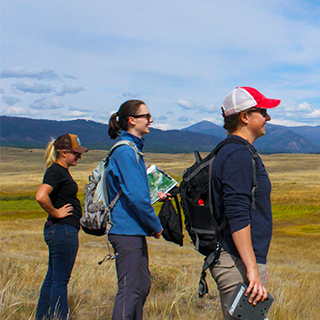So You're Going on Exchange!
Congratulations you're going on an exchange! With this new adventure coming your way, you probably have a few questions, like will you be safe, how will you pay for school and register for classes, and where will you live. We have answered frequently asked questions below and hope that the answers will help elevate your concerns and jumpstart your excitement as you prepare for your National Student Exchange.

NSE Offers two different payment options for students. However it is important to keep in mind that payment options vary from campus to campus and it is a good idea to contact our NSE coordinator. Kathy Peters, to learn which options are available to you and which option is best for you.
Host Payment
Students exchanging under Host Payment pay in-state resident rate tuition and fees directly to the host campus, and no tuition is paid to the home campus. For eligible students exchanging under Host Payment, you may apply for financial aid from your "host" school. To do this you must remember to enter the school's FAFSA code on the FAFSA application. FAFSA codes for all NSE campuses are available at the campus NSE office, on the FAFSA search, and nse.org.
FAFSA: On your FAFSA form, list the FAFSA code for your home campus.
Home Payment
Student pay their normal tuition and fees to their home campus, and no tuition is paid to the host campus. For eligible students exchanging under Home Payment, federal financial aid is awarded by, and disbursed from the home campus. College Work Study aid will not be available for students away on exchange, however non-CWS employment may be available.
FAFSA: If exchanging under Home Payment, list only the FAFSA code for your home campus. Do not list the FAFSA code for your exchange site(s). This could result in an over-award and financial aid errors.
While on you exchange you will be responsible for all transportation (flights to an from the exchange as well as transportation while on exchange), housing, and food costs. We know this sounds daunting, but most schools create a community for NSE students to meet each other, find housing, and talk about their experiences!
If you are eligible for financial aid, we can also create a revised tuition/fees budget sheet to include room and board, cost-of living and travel expenses to submit to Financial Aid for increased eligibility consideration. Each student’s financial situation is unique and requires consultation with a Financial Aid.
After you accept your placement, the host school NSE Coordinator will send application materials, class registration forms, housing applications, and other materials needed for enrollment, including: time schedules, guidelines for registration, and tuition payment.
Yes. To transfer credits and grades back to UM, students must request an official transcript be sent to from their host institution to UM after grades are posted. UM’s Registrar will post the credits and GPA earned at the host school to the UM transcript. On the UM transcript, credits and grades will be listed separately and not factored into the UM GPA.
For some schools, yes.
Spanish is the language of instruction at Puerto Rico NSE schools. If your plan to apply to Puerto Rico, you must demonstrate Spanish language proficiency.
French is the language of instruction at the Universities de Sherbrooke in Quebec, Canada. If you plan to apply here, you must demonstrate French language proficiency.
*Proficiency means you are able to read textbooks, understand lectures, take part in classroom discussions, do written work and take examinations in another language. UM offers a free 30-minute language proficiency placement exam with immediate results in the World Languages and Cultures Department, located in Liberal Arts 133. For more information, email: hsadvising@mso.umt.edu
Absolutely! Many students have enjoyed a combination of NSE exchange, international exchange, and short term faculty lead study abroad programs throughout their UM career.
Students can participate NSE exchanges for up to 2 years. Exchanging at one school for one year and then exchanging at a different school for another year.
Students that choose this option can still choose to study abroad as well potentially spending three academic years studying different universities.
No. UM students must choose a non-Montana school for their exchange.
